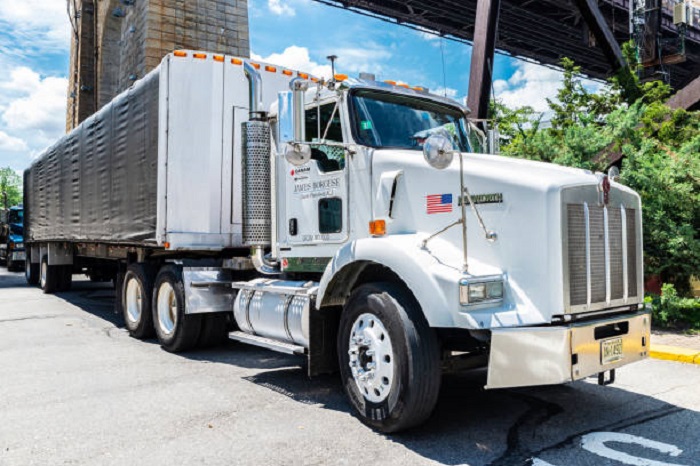There’s a reason people roll their eyes when someone says, “It’s just a quick drop in Manhattan.” Anyone who’s done trucking in NYC knows there’s nothing “quick” about a high‑rise loading dock at 8:30 a.m., a service elevator that goes down for fire drills, or a street that turns into a film set with a no‑standing zone you didn’t see coming. New York is a logistics obstacle course — and that’s exactly why the right partner matters.
Duma Shipping was built for this city. The team handles NYC freight of every flavor: local package delivery New York, small and mid‑size freight, mini moves, eBay pick‑ups, white‑glove furniture and appliances, plus steady lanes up and down the East Coast. Think New York through New Jersey, Pennsylvania, Delaware, Maryland, the District of Columbia, Virginia, North Carolina, South Carolina, Georgia, and into Florida. The focus is simple: timelines you can trust, handling that respects the cargo, and communication that keeps everyone in the loop.
This isn’t a pitch; it’s a working manual. If you’re weighing freight companies in New York or just tired of deliveries that unravel at the building lobby, use this as your checklist.
What Makes New York Freight… New York
Other cities have traffic. New York has rules layered on top of rules, and the rules actually get enforced. That’s the difference between “dropped off” and “try again tomorrow.”
- Windows are law. Buildings don’t “fit you in later.” Miss the slot, you’re rescheduling.
- COIs are not paperwork — they’re access. No certificate of insurance, no dock, no dolly, no delivery.
- Route restrictions are real. Low parkway bridges, tunnel haz‑mat bans, and blocks that hate box trucks.
- Stairs and tight hallways. What looks simple on a floor plan becomes a geometry problem.
Security desks. If reception doesn’t have your name, the shipment’s not moving.
A reliable freight company New York wins on these soft factors as much as on miles and minutes. Duma Shipping treats them like part of the freight plan, not “stuff we’ll figure out curbside.”
Core Services (Built for the Five Boroughs and the Corridor)
Door‑to‑Door Delivery (local & interstate). Apartments, brownstones, warehouses, galleries, office towers — staged to hit your service‑elevator window without drama.
Mini Moves that feel bigger than the name. Studios, small offices, equipment relocations. Furniture and appliances get wrapped, corner‑guarded, and treated like they belong in a gallery.
eBay Local Pick‑Up. Auction wins don’t ship themselves. The crew verifies, collects, protects, and drops at your door.
Last‑Mile & Store‑to‑Store. For retail and e‑commerce, package delivery NYC lives and dies by access rules and storefront schedules. We plan accordingly.
On‑Time Delivery as a policy, not a slogan. Schedules are designed around the building’s reality, not wishful thinking.
Real‑Time Visibility. Status updates that make sense — so operations, store managers, and receivers don’t waste half a day asking, “Where is it?”
Coverage That Matches How the East Coast Actually Works
The New York metro is the hub, but freight doesn’t stop at the Hudson. Routines include:
- New York – New Jersey – Pennsylvania day‑to‑day routes
- Mid‑Atlantic drops: Delaware, Maryland, DC, Virginia
- Carolinas to Georgia for regional rollouts and events
- Florida for seasonal inventory, store openings, and snowbird moves
This corridor is where freight shipping NY meets the practical reality of supply chains. One playbook, consistent SLAs, and a single operational language from boroughs to beaches.
Pricing That Respects the Real Costs (and Cuts the Fake Ones)
Rates that “seem low” until the driver shows up are the most expensive rates you’ll ever pay. The honest quote asks about the things that actually change the job:
- Lane & distance. Local package delivery NYC vs. interstate freight shipping New York (e.g., NY → FL).
- Dimensions & weight. Boxes, crates, long items, or palletized New York cargo.
- Handling & packing. Basic protection vs. white‑glove steps.
- Access. Stairs, service elevator, tight halls, dock appointments, and security rules.
- Timing. Standard windows, constrained building slots, off‑hour work where allowed.
- Protection. Baseline coverage is standard; high‑value items can opt into enhanced protection.
The philosophy is boring on purpose: no bait‑and‑switch. The number should hold when the truck hits the block.
Field Notes from the Five Boroughs (What Actually Saves the Day)
- Pre‑clear the building. Submit COIs ahead of time in the exact format management wants.
- Name the elevator captain. Someone in the building controls that switch; know who it is.
- Stage near tight windows. If you’ve got a fifteen‑minute slot, be in the neighborhood early.
- Label like you mean it. Floor, suite, “this side up,” fragile — it speeds the handoff and prevents debates.
- Bring hallway protection. Even if the building says “optional,” use it; it’s not optional when the super’s watching.
- Photograph pre‑wrap. Two photos of furniture or art before the blankets go on solve 90% of end‑of‑line questions.
These are the unglamorous moves freight companies NYC either do automatically — or learn the hard way, on your dime.
Use Cases (Because “We Do Everything” Doesn’t Help Anyone)
Retail & E‑Com. Store transfers that match service‑elevator windows; returns and replenishment that don’t annoy landlords; last‑mile drops that hit promised ETAs.
Galleries & Designers. Custom crating, white‑glove handling, wall‑safe gear, and respectful crews. If it belongs under lights, it’s treated that way from the truck.
Events & Installations. Timelines stacked back‑to‑back, show‑floor rules, union coordination where required.
Manufacturing & B2B. Components, exhibits, and finished goods that feed schedules — not excuses.
Residential & Micro‑Office. Mini moves that behave like major moves in tight spaces, with quiet wheels and clean hallways.
When folks ask for recommendations for a freight company New York, they want “the one that shows up, knows the doorman, and leaves the lobby looking better than they found it.” That’s the bar.
The East Coast Weather Clause (Planning Beats Wishing)
Storms happen. Heat waves happen. The plan shifts:
- Pull‑forward windows. Move early stops even earlier to beat closures.
- Re‑route around height‑restricted roads when visibility drops or detours hit.
- Protect temperature‑sensitive items with proper wraps and placement.
- Increase comms cadence. More updates, shorter intervals, fewer surprises.
You can’t fix weather, but you can fix how you communicate around it.
Building Etiquette = Faster Freight
Plenty of freight shipping New York fails on etiquette, not engineering. What keeps things moving:
- Floor runners and corner guards where appropriate
- Quiet casters and the right PPE in service areas
- Never blocking egress paths — ever
- Respect for supers, reception, and security desks
- Clean PODs that match what really happened
This is the culture piece. It’s also why certain buildings wave the crew through with a nod.
Sustainability That Actually Works in a City
Buzzwords don’t move boxes. Practical steps do:
- Right‑size vehicles to cut empty miles and wrong turns
- Route density for multi‑stop city days
- Durable, re‑usable protection where safe and permitted
- Digital paperwork to speed docks and reduce lobby traffic
Cleaner runs are usually cheaper runs. That’s a win for budgets and for New York.
The Language New Yorkers Actually Search (Naturally Woven In)
If you’re reading this because you typed something into a search bar, it was probably one of these — which you’ll find in the copy without spamminess:
- NYC freight / New York freight / freight shipping NYC / freight shipping New York / freight shipping NY
- Freight companies in New York / freight companies NYC / freight company New York
- Package delivery New York / package delivery NYC / New York package delivery / NYC package delivery service
- New York cargo / trucking in NYC
The point is service clarity first, search discoverability second.
FAQs (Straight Answers, New York Style)
Do you do same‑day in NYC?
Often, yes — if the building window is open and access is confirmed. It’s about the calendar more than the clock.
What about fragile or high‑value items?
They get elevated packing and handling, with the option to increase protection beyond the standard baseline.
Which areas are covered?
Locally: all five boroughs and the broader tri‑state. Regionally: the East Coast corridor from New York to Florida, including NJ, PA, DE, MD, DC, VA, NC, SC, and GA.
Can you coordinate with management?
Yes. COIs, dock appointments, service elevators, and security procedures are standard parts of the plan.
Do you provide real‑time status?
Yes. You’ll get clear, timely tracking so nobody’s guessing.
Mistakes That Make Deliveries Late (and How to Dodge Them)
- Assuming any elevator will do. Passenger elevators aren’t a backup for service cars; some buildings won’t allow it at all.
- Forgetting about lunch. The dock manager’s break is your delay. Confirm hours.
- Under‑packing furniture. A blanket alone isn’t enough for tight corners; add cardboard skins and banding.
- Ignoring stair counts. “It’s just one flight” turns into three narrow flights with a turn — measure first.
- No label on top. If a pallet only reads on one side, expect someone to spin it around mid‑dock.
Avoid these and you’re ahead of half the city.
The Duma Shipping Difference (What Clients Actually Notice)
- Schedules that stick. Not perfect every time — honest every time.
- Crews trained for buildings, not just roads. Lobby etiquette matters.
- Dispatch that communicates. Problems flagged early; solutions offered fast.
- Playbooks for repeat runs. The second run is smoother than the first by design.
- Coverage that scales. From a box in Brooklyn to a lane to Florida.
That’s why repeat customers don’t shop the lane every week. They value uptime more than a theoretical dollar saved.
Prep Checklists You Can Paste into SOPs
For Operations Managers
- Confirm COI format and delivery contacts with building management.
- Share service‑elevator hours and dock rules with the crew in writing.
- Pre‑tag shipments with floor, suite, and placement notes.
- Provide alternate contacts in case the main receiver is tied up.
For Store Managers
- Clear the back room before the window.
- Make space by the service entrance and keep hallways open.
- Stage returns with labels facing outward.
- Keep tools for light assembly on hand if building policy allows.
For Residential Deliveries
- Reserve the service elevator (don’t trust “it’s usually free”).
- Measure doorways and stair turns; protect corners.
- Secure pets and clear walk paths.
- Set aside packing waste space for quick clean‑up.
These tiny steps change a “New York delivery” from a gamble to a routine.
When the Job Is Interstate (New York → Florida and Back)
Corridor work adds distance but shouldn’t add confusion. What to expect:
- Unified SLAs along the route so “on time” means the same thing in every state
- Status milestones at key legs (handoffs, state lines, overnight holds)
- Consistent packing standards so receiving teams don’t have to guess
- Buffer planning for weather and traffic at chokepoints
Whether it’s a one‑off project or a recurring lane, the rhythm stays consistent.
Why This Matters (and Who It’s For)
If you’re an e‑com operator who needs New York package delivery that doesn’t make customer service cry… a facilities manager who wants a steady NYC package delivery service for store remodels… a gallery that won’t put art at risk… a manufacturer who runs on tight lead times… or a resident who wants a mini move without hallway drama — the difference between a random truck and a freight company New York built for the city is the difference between “arrived” and “almost.”
Final Word: The New York Way
New Yorkers don’t need promises. We need plans that hold up under pressure: building windows hit, gear that fits, crews that respect the space, and updates that show up before we have to ask. That’s the whole thesis behind NYC freight done right. Keep it simple, keep it honest, keep it moving — and the city will meet you halfway.





